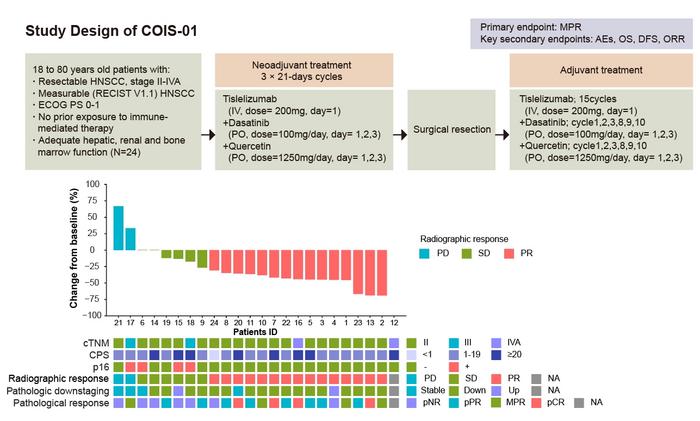Senolytic drug combo boosts cancer immunotherapy and reduces side effects
Posted: 1 October 2025 | Drug Target Review | No comments yet
Researchers have discovered that targeting immune cell ageing can overcome resistance to head and neck cancer treatment.


Head and neck squamous cell carcinoma (HNSCC) is a malignant tumour originating from epithelial cells. Chemoimmunotherapy has improved pathological response rates in patients with locally advanced HNSCC. However, its effectiveness is limited by variable patient responses, overlapping treatment-related toxicities and drug resistance.
Immunosenescence linked to treatment resistance
The study, published in Nature Medicine, was led by Associate Professor XU Fang from the Shenzhen Institutes of Advanced Technology of the Chinese Academy of Sciences, in collaboration with researchers from Sun Yat-sen Memorial Hospital, Sun Yat-sen University, Guangzhou National Laboratory and Harvard Medical School.
The research collaboration demonstrated that immunosenescence plays a key role in treatment resistance, showing that targeting senescent immune cells improves the effectiveness of immunotherapy.
Phase II trial identifies immune ageing in non-responders
The researchers first conducted the oral/oropharyngeal squamous cell carcinoma (OOC-001) phase II trial, in which 51 patients with resectable HNSCC received neoadjuvant chemoimmunotherapy. In 23 of these patients, the cancer disappeared completely.
Single-cell multi-omics profiling demonstrated that non-responding tumours displayed prominent features of immunosenescence – including reduced CCR7+ CD4+ naïve T cells and CD27+ memory B cells.
Senolytic drugs restore immune function in animal models
The researchers also tested senolytic drugs in animal models. They found that the combination of dasatinib and quercetin with PD-1 blockade significantly reduced tumour burden and extended survival. This surpassed the efficacy of PD-1 inhibitors alone or in combination with chemotherapy.
Importantly, the senolytic combination restored naïve T cell function and reversed markers of immune ageing.


Study design and patient characteristics from the COIS-01 Trial. Credit: SIAT
Clinical trial demonstrates lower toxicity and promising responses
Building on these results, the researchers launched a phase II clinical trial (COIS-01) testing senolytics plus immunotherapy. A total of 24 patients with resectable HNSCC received neoadjuvant treatment with anti-PD-1, dasatinib and quercetin.
The regimen achieved a 33.3 percent major pathological response rate with markedly lower toxicity compared to chemoimmunotherapy. Only one patient experienced grade 3-4 adverse effects, compared with more than half in the chemoimmunotherapy cohort.
A new direction for solid tumour immunotherapy
By combining senolytic drugs with immunotherapy, researchers not only improved tumour response but also reduced treatment-related toxicity. This new approach to treating head and neck squamous cell carcinoma could change outcomes for patients – offering more effective and safer cancer treatments in the future.
Related topics
Animal Models, Cancer research, Clinical Trials, Drug Development, Drug Discovery, Immuno-oncology, Immunotherapy, Oncology, Precision Medicine, Therapeutics
Related conditions
head and neck squamous cell carcinoma (HNSCC)








